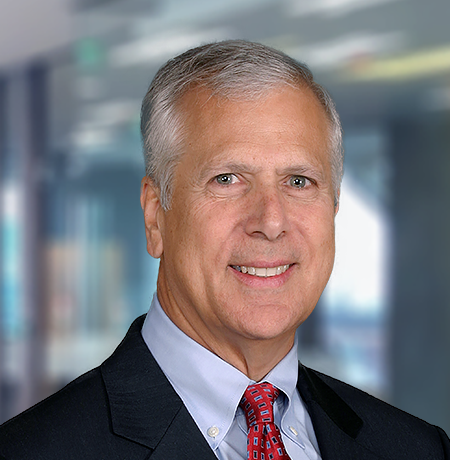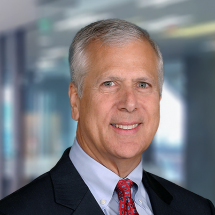
We recently revisited a publication we issued in the early months of the pandemic, which called on college and university leaders to consider the process introduced by Microsoft CEO Satya Natella to “respond, recover, and reimagine” their institutions as they address and then move beyond the impacts of the COVID-19 pandemic. Our idea was to see if we thought our advice has changed over the past two years. It has not, we decided; if anything, the imperative to reimagine higher education is even more powerful today.
The many changes brought about by the pandemic and other events over the past two years—organizational, social and cultural, political, and economic—have heightened the challenges facing higher education. In the coming months, we will be reaching out to higher education leaders across the country to discuss how they are addressing these many challenges. To kick off this series of conversations, we would like to offer some initial thoughts on what defines strong leadership in higher education.
Our first thought is that college and university leaders must be open to examples of leadership from other industries, as well as those from within the world of higher education. There are, of course, significant distinctions between for-profit industries and a not-for-profit college or university. But there are important similarities as well. Thinking of higher education as a product-based business with distinctive product lines and consumer segments can bolster, not diminish, an institution’s not-for-profit mission by ensuring that the institution remains relevant and financially viable. The need for market relevance and financial viability is shared by all industries and institutions, as are many of the leadership attributes that help achieve these goals.
Our publication on “respond, recover, and reimagine” ended with a call to action we described as “a time for leadership.” We called out four attributes that would be required of leaders: transparency, collaboration, alignment, and flexibility. Several years ago, a group of researchers reported in the Harvard Business Review on their decade-long project, called the CEO Genome Project, to identify the attributes that distinguished high-performing CEOs from their peers. They also identified four attributes:
- Deciding with speed and conviction
- Engaging for impact
- Adapting proactively
- Delivering reliably
Working through their discussion and the definitions of these attributes, we found significant overlap with the attributes we had identified for higher ed leaders, but also some important new considerations.
Deciding with speed and conviction
In our discussion of flexibility, we noted that higher ed leaders “must be willing to make decisions, course correct as necessary, and continue to move forward.” The CEO Genome Project researchers reached a similar conclusion, finding that “high-performing CEOs understand that making a wrong decision is often better than no decision at all.” Of the CEOs who ranked low on decisiveness, only 6% ranked low because they were too quick to decide, while 94% received a low score “because they decided too little, too late.” Most decisions can be corrected if they prove wrong; no decision will eventually subject an institution to external forces that will compel actions which in most cases will not be the best for the institution.
Engaging for impact
This attribute overlaps with our discussions of collaboration—the need to give various constituencies a stake in decision-making—and transparency—providing clear and convincing communications that detail why difficult decisions need to be made.
The CEO Genome Project researchers identify one feature of this attribute that might pose unique challenges for higher education leaders: it emphasizes that leaders who excel at engagement “give everyone a voice but not a vote.” The shared governance model in higher education, for example, often requires that faculty have not just a voice but also a vote on decisions affecting academic programs. Even more important, then, for higher education leaders is the researchers’ advice to develop “an astute understanding of their stakeholders’ needs and motivations.” One of the CEOs interviewed for the project describes how she creates a stakeholder map of the key people who need to be on board with a decision, identifies potential detractors and their concerns, and thinks about how she can take the energy they might put into resistance and turn it into something positive.
Higher ed leaders also must consider how they can effectively and consistently communicate across an often-fragmented landscape of academic departments and schools with different loyalties and uncertain or underdeveloped communication pathways. Part of the answer is creating a compelling vision and message in collaboration with the deans as to how a decision will benefit the institution as a whole and how that benefit will help all boats rise. Another part is simply making an effort to get out and talk to people across the institution.
Adapting proactively
This leadership attribute does not directly overlap with those we had identified but aligns closely with the goal of reimagining higher education for the long term. The CEO Genome Project researchers found that adaptable CEOs spend as much as 50% of their time thinking about the long term. They also “regularly plug into broad information flows…finding relevance in information that may at first seem unrelated to their businesses.” They are prepared for setbacks and treat mistakes as opportunities to learn and grow as they remain focused on long-term success.
Delivering reliably
In our discussion of alignment, we noted the importance of staying on course once a decision has been made and establishing standards of accountability for leaders across the institution. The CEO Genome Project researchers add additional insights. CEOs who deliver results reliably work closely with stakeholders to understand their expectations—and to set realistic expectations for what the organization can deliver. They support the need for accountability with a regular cadence of business meetings, a dashboard of metrics that must be achieved, and multiple channels for monitoring performance. Perhaps most importantly, they surround themselves with a strong team, with “a focus on performance relevant to the role rather than personal comfort or loyalty.”
We look forward to our conversations with higher ed leaders to get their insights regarding how these attributes—and others—have supported effective decision-making and institutional advancement. If you have insights to share, we would welcome the opportunity to talk with you. Please reach out to either Jason at jsussman@kaufmanhall.com or Larenda at lmielke@kaufmanhall.com with your story. We will be taking a break in July but will be back in August with our first leadership profile. Enjoy your summer!









